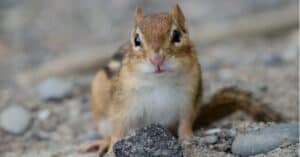Chipmunks are adorable little critters! They might also seem mysterious because we don’t see most of their lives. You may have noticed chipmunk holes in your yard and wondered what the structure beneath the soil looks like. Or, maybe you’re fed up and want to fill them in a way that doesn’t injure the animals.
In this article, we’ll talk more about chipmunk holes, what they look like, and how to fill them.
What Does a Chipmunk Burrow Look Like?
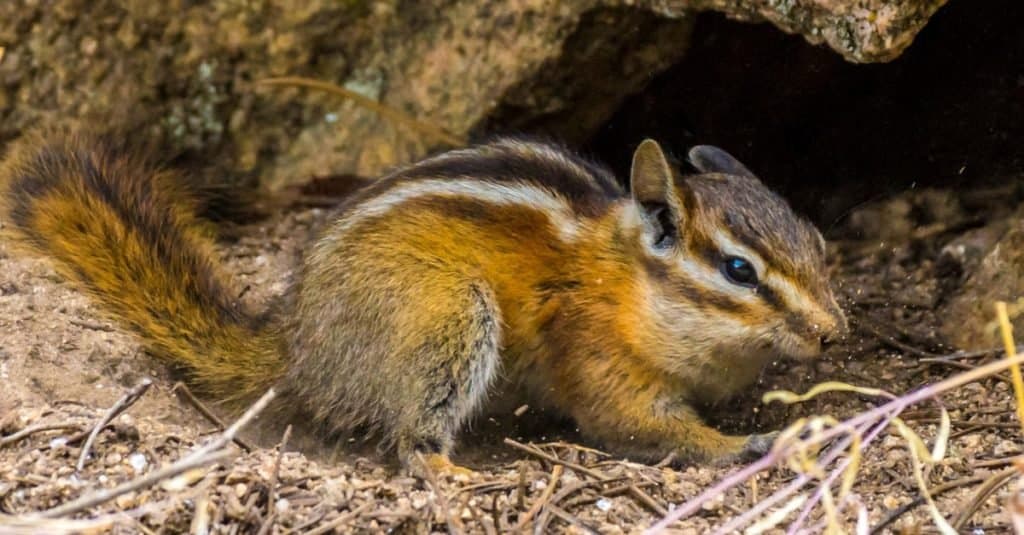
Chipmunk burrows are 2-3 inches in diameter.
©Ryan Narron/Shutterstock.com
Chipmunk burrows are 2-3 inches in diameter. They don’t have mounds of dirt, like mole holes or ant hills. Instead, they’re flat to the ground. On the inside, a chipmunk’s burrow is a complex little home consisting of several entrances, some of which may be plugged and no longer used by the chipmunks. The burrows also have “plunge holes,” which are holes that lead to tunnels going straight down.
Many pockets in the burrow allow chipmunks to store food, go potty, and give birth to baby chipmunks. These typically surround the larger nesting area where a chipmunk sleeps.
Lastly, the bottom of the burrow contains a few drainage tunnels that collect water, keeping the chipmunks dry and safe beneath the soil.
Over time, chipmunk burrows become more and more complex—like lucky humans upgrading to larger homes, except chipmunks just build their extensions! Chipmunks often have multiple burrows as well. Some are shallower and used as quick hide-outs while foraging, while their nesting burrows are larger and more intricate.
The burrows can go as far as three feet underground and extend to lengths of thirty feet!
How Do Chipmunks Make their Holes?
Chipmunks make their holes by digging. They begin by digging straight down, then they create a tunnel parallel to the ground and end it with a nest. Over time, they build tunnels out from the nest that leads to pockets.
These pockets are mainly used for storing food, but chipmunks also have a designated “bathroom” inside the burrow and a pocket where they give birth away from the main nest.
How Many Chipmunks Live in a Hole?

Just one chipmunk lives in each burrow.
©iStock.com/rodmacpherson
Chipmunks are solitary creatures, and they primarily interact during mating season. Unless a chipmunk mother is caring for her pups, chipmunks live alone. They’re also quite territorial and defend a perimeter around their burrows with loud chips and chucks.
Where Does the Dirt Go When Chipmunks Dig a Hole?
It was stated earlier that chipmunk holes didn’t have mounds of dirt surrounding them. You might wonder, where does all of that dirt go if not to the surface?
Chipmunks store dirt in their cheek pouches as they dig. They later carry it out of the burrow and disperse it on the ground.
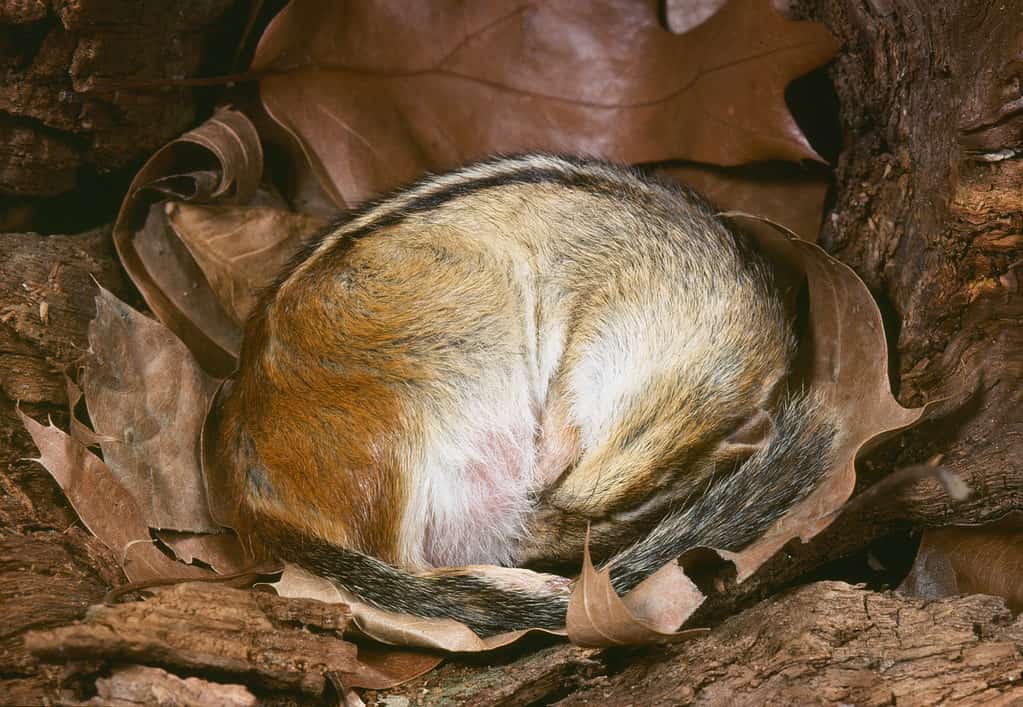
Chipmunks enter a state of torpor to survive the cold winter.
©Breck P. Kent/Shutterstock.com
Do Chipmunk Burrows Have Two Entrances?
Chipmunk burrows can have many entrances depending on the size of the burrow. Typically, there is more than one entrance and potentially several if the burrow is large and old.
How Do You Get Rid of Chipmunks Naturally?
The Humane Society makes a good case for keeping chipmunks around. Their primary argument? Look at those cute little cheeks!
Jokes aside, chipmunks are unlikely to damage your property. In fact, the Humane Society says there are no documented cases of this happening. It seems it’s only a myth spread by pest control companies trying to get money. The damage chipmunks can do is typically limited to the garden.
You can keep chipmunks out of your garden by using humane deterrents, like planting daffodils and allium. Gravel borders and L-shaped footers can keep chipmunks off your property, or even a section of it, if preferred.
Removing debris that chipmunks can hide under, including rocks, wood, and bushy plants, will also make them less likely to hang out in your yard.
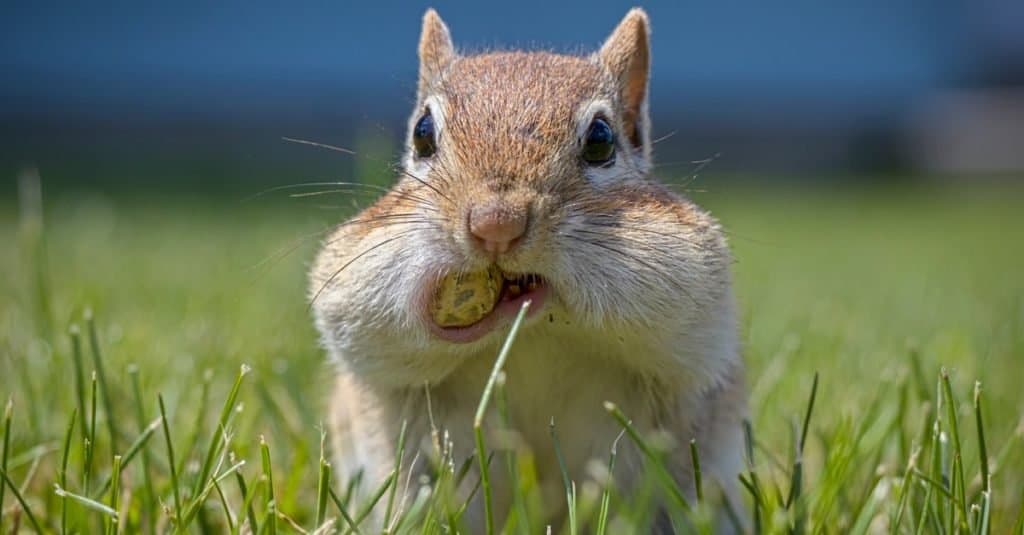
Chipmunks have cheek pouches for transporting food to their burrows.
©Fiona M. Donnelly/Shutterstock.com
Chipmunks Inside the House
If the chipmunk is in your home, try closing it in one room alone. Of course, keep your pets out so that they don’t eat the little one! Once you’ve isolated it, open the doors and windows in that room, leave, and the chipmunk will run free on its own. If this solution doesn’t work, try setting a live trap with peanut butter bait or catching the chipmunk with a towel.
Always put your safety first. Wear thick gloves if handling the chipmunk, act quickly, and set it free immediately.
Once the chipmunk is caught, it can be released into the yard. If you’re unsure how it got inside, look for any holes in your interior or exterior walls that are two inches or more in diameter.
What Do Chipmunk Burrows Look Like?
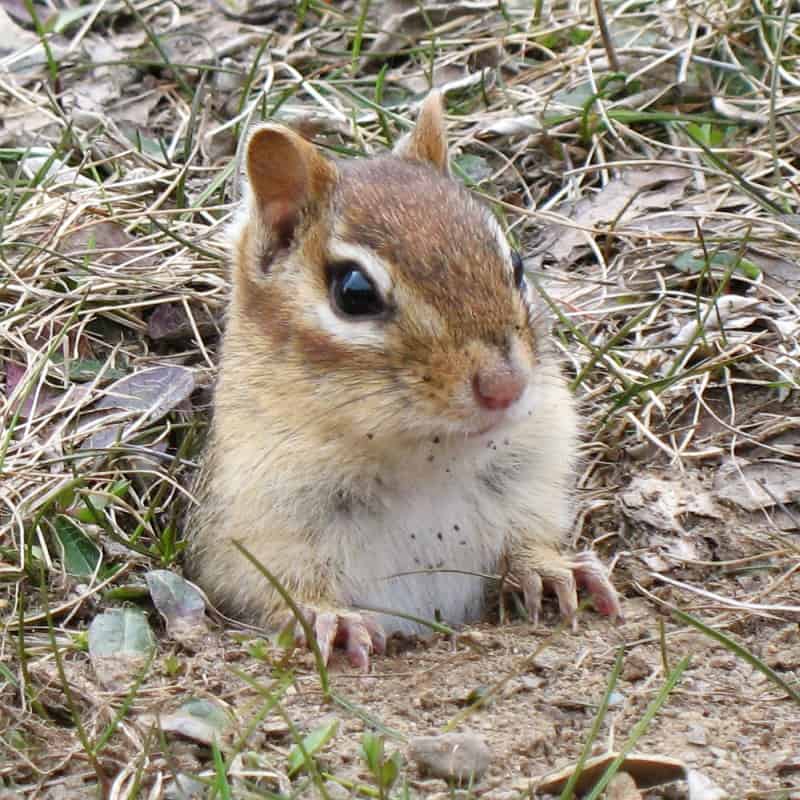
Chipmunks live in ground burrows that they dig themselves.
©Gilles Gonthier / CC By 2.0 – License
Chipmunk burrows typically measure 2-3 inches wide and are different from mole tunnels or ant hills by being level with the ground and lacking raised mounds of soil. Inside, these burrows form intricate dwellings for chipmunks, featuring multiple entrances.
These burrows comprise a network of tunnels with differing widths and may even run alongside substantial tree roots. Chipmunks utilize side pockets within their burrows for storing food items like nuts and seeds, as well as to collect empty shells. Occasionally, these pockets serve as additional space for maneuvering when the tunnels become cramped.
Further, some of these entry points may be sealed or abandoned by the chipmunks over time, contributing to the complexity of their underground homes.
Should you Fill Chipmunk Holes?

Chipmunk holes can be filled with gravel, or humane deterrents can be implemented.
©Ryan Narron/Shutterstock.com
After reading the above, you might see chipmunks in a new light and know that, according to the Humane Society, chipmunks are unlikely to damage structures. But maybe you still don’t want holes in your yard.
Chipmunk holes can be filled using dirt, but they are likely to dig them back out again. While cat litter has been recommended to fill holes, the practice isn’t advised. It will keep the chipmunks from burrowing again and comes with the added benefit of smelling like a predator, but it’s not good for the environment or human health.
Cat pee often contains a parasite called Toxoplasma gondii. This is harmless to them but can be spread to people and lead to toxoplasmosis.
Many people can live with toxoplasmosis and have no symptoms, but it tends to have a greater impact on pregnant people and those with compromised immune systems. Severe cases of toxoplasmosis can lead to damage to the eyes, brain, and other organs.
Instead of cat litter, try filling the hole with gravel. It’s loose and eco-friendly, and the chipmunk will struggle to create a new burrow inside it.
Where Do Chipmunks Live?
Chipmunks can be found all across the United States, Canada, and Mexico. The Siberian Chipmunk ranges from the White Sea of northwestern Russia through Siberia to Northern Japan and to China.
Chipmunks are common in forests, woodlands, meadows, and in yards and gardens with nut-bearing trees and bird feeders.
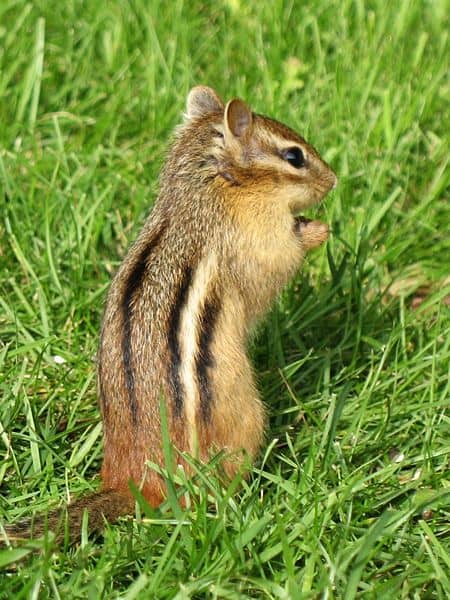
Chipmunks have striped coats.
©Gilles Gonthier, CC BY 2.0, via Wikimedia Commons – License
Keeping Chipmunks Away for Good
It’s important to know that filling the holes won’t keep chipmunks away for good, however, and they’ll likely continue to make new holes nearby to access their burrows.
To keep chipmunks out more permanently, try planting things they dislike, using a gravel border, or fencing in your yard. So long as the fence goes underground deeply enough and doesn’t have holes a chipmunk can fit through, it should keep them out.
The photo featured at the top of this post is © Skyler Ewing/Shutterstock.com
Thank you for reading! Have some feedback for us? Contact the AZ Animals editorial team.




